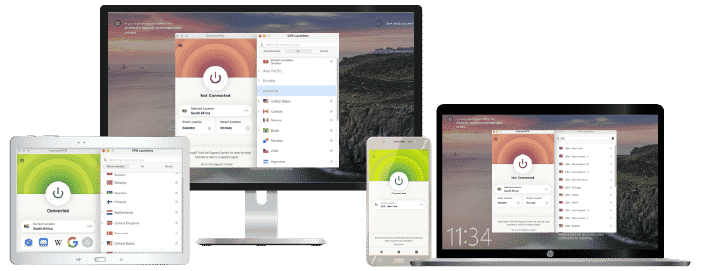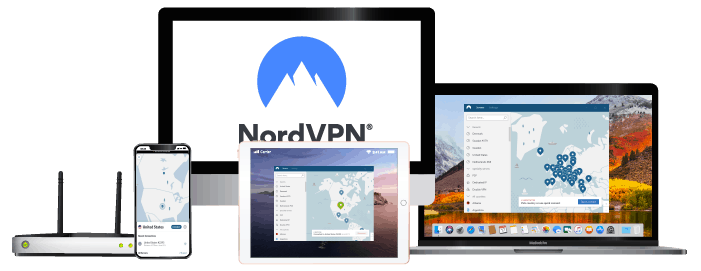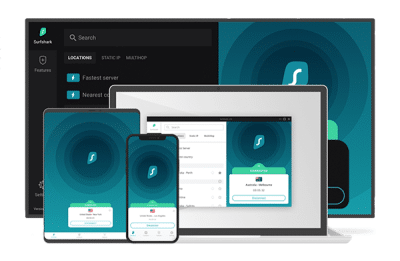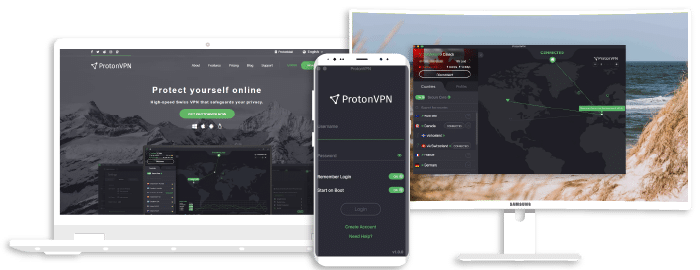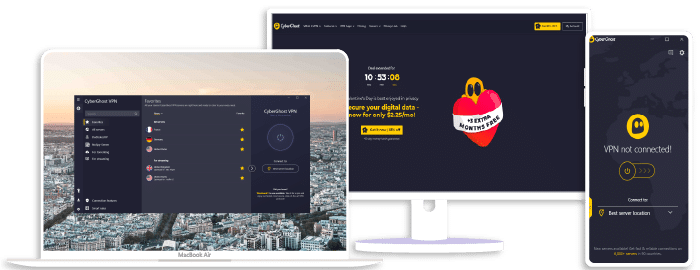VPN vs. Zero Trust vs. SDP
In the ever-evolving sphere of cybersecurity, understanding different network security models is a must for anyone serious about protecting their online data. Today, I’m breaking down the differences between VPNs (Virtual Private Networks), zero trust networks, and SDPs (Software Defined Perimeters).
You’re likely familiar with VPNs like ExpressVPN, NordVPN or Surfshark. These tools encrypt your internet connection and mask your IP address to keep your online activities anonymous. On the other hand, zero trust is a security concept based on the principle that organizations shouldn’t automatically trust anything inside or outside its perimeters and instead must verify anything trying to connect to its systems before granting access.
Finally, there’s SDP – short for Software Defined Perimeter. Much like zero trust models, SDPs work by verifying user identities before allowing them access to any resources in the network. However, they add an extra layer of protection by hiding these resources from unauthorized users altogether.
While all three concepts aim at enhancing cybersecurity in their unique ways, they each offer distinct benefits and challenges that are worth exploring further if you’re looking to bolster your digital defenses.
ExpressVPN
Overall score: 9.8
- 3,000+ servers across 105 countries
- Works with streaming platforms
- AES 256-bit encryption
- Supports private protocol, Lightway
- Money-back guarantee
30-day money-back guarantee
NordVPN
Overall score: 9.6
- 8,700+ servers available in 129 countries
- Connect up to 10 devices simultaneously
- Great security features
- Verified no-logs policy
- Unblocks streaming platforms
30-day money-back guarantee
Surfshark
Overall score: 9.5
- 4,500+ servers in 100+ countries
- Allows unlimited simultaneous connections
- Integrates stealth mode
- Multihop feature available
- Webcam protection from unauthorized apps
30-day money-back guarantee
Proton VPN
Overall score: 9.4
- 15,800+ servers in 125+ countries
- Free version available
- Strong security features
- Reliable no-logs policy
- Allows Perfect Forward Secrecy
30-Day Money-Back Guarantee
CyberGhost
Overall score: 9
- 9,300+ reliable servers in 100 countries
- 45-day money-back guarantee
- Strict no-log policy
- Tough security features
45-Day Money-Back Guarantee
Understanding the Basics: VPN, Zero Trust, and SDP
Let’s dive right into the heart of our topic: VPN, Zero Trust, and SDP. These three acronyms represent different approaches to secure connectivity in our digital world. But what exactly do they mean? And how are they different?
Starting off with a Virtual Private Network (VPN). It’s been around for quite a while, offering users an encrypted connection to another network over the internet. VPNs like ExpressVPN, NordVPN, or Surfshark are commonly used to access region-restricted websites by masking your IP address as if you were browsing from somewhere else.
Moving on, we’ve got Zero Trust – it’s more than just a cool name! Unlike traditional security models that assume everything inside an organization’s network can be trusted, Zero Trust adopts a “never trust, always verify” stance. Essentially, it treats every access request as if it came from an open network. Regardless of where the request originates or what resource it accesses, Zero Trust verifies every user and device before granting access.
Finally, we have Software-Defined Perimeter (SDP). This is a security framework designed to provide on-demand, dynamically provisioned secure access control. SDPs create invisible networks or “black clouds” where all resources are hidden by default until authenticated and authorized.
Here’s how these three compare:
| VPN | Zero Trust | SDP | |
|---|---|---|---|
| Philosophy | Secure remote access | Never trust, always verify | Invisible networks |
| Protection Type | Encrypts data transfers | User & Device Verification | On-demand Access Control |
Each approach has its strengths and weaknesses depending on individual needs and context. While I might use ExpressVPN for my personal online browsing due to its robust encryption features, I’d choose a Zero Trust model for my corporate environment because of its rigorous verification processes.
In summary:
- A VPN provides secure connections.
- The concept behind Zero Trust is “never trust, always verify”.
- An SDP creates dynamic secure access controls.
Now that we’ve laid out the basics, let’s delve deeper into each one in turn.
Diving Deep into Differences: VPN vs. Zero Trust vs. SDP
Let’s start by taking a look at Virtual Private Networks or VPNs. Imagine you’re using an app like ExpressVPN or NordVPN; a VPN creates a secure tunnel between your device and the internet, encrypting all data that passes through it. This means no one can snoop on your online activities – not even your Internet Service Provider (ISP). It’s great for securing public Wi-Fi connections or accessing geo-blocked content.
Now let me introduce you to Zero Trust models. Unlike VPNs, Zero Trust doesn’t automatically trust anything inside or outside its network. Instead, it verifies every request as if it’s coming from an open network, regardless of where it originates from. Sounds strict? Well, that’s because it is! It ensures organizations don’t blindly trust any individual or device with access to their systems.
Lastly, we have the Software Defined Perimeter (SDP) model, which aligns well with Surfshark users out there! Just like a shark in the ocean has complete control over its territory, an SDP gives full control over who can see and access network resources, making everything else invisible and inaccessible to outsiders.
Here are some key points differentiating these three:
- VPNs provide encrypted tunnels for secure data transmission
- Zero Trust verifies every single request irrespective of its origin
- SDPs make network resources invisible to outsiders except authorized users
So how do they stack up against each other?
| Aspect | VPN | Zero Trust | SDP |
|---|---|---|---|
| Security Level | Moderate | High | Very High |
| Accessibility | Global | Conditional | Limited & Controlled |
While each has its own advantages and drawbacks depending on the context of use, understanding these differences should help inform your decision about which solution best suits your needs.
Wrapping Up: Deciding Between VPN, Zero Trust, and SDP
So we’ve explored the differences between VPN (Virtual Private Networks), Zero Trust and SDP (Software Defined Perimeter) protocols. It’s time to make a decision on which one is best for your specific needs. Let’s summarize what we’ve learned.
VPNs like ExpressVPN, NordVPN, or Surfshark are great for securing your data while browsing the internet, especially when using public Wi-Fi. They’re easy to use and provide end-to-end encryption for all your online activities. You’ll get:
- Security from cyber threats
- Anonymity while surfing
- Access to geo-restricted content
But remember that not all VPNs are created equal. Make sure you choose a reliable provider.
On the other hand, Zero Trust architecture operates on the principle of “never trust, always verify.” Instead of trusting anyone inside or outside the network by default like traditional security models do, Zero Trust assumes every user could potentially be a threat. This leads to stronger security but can be more complex to implement.
Lastly, there’s SDP – a cybersecurity framework that decreases network attack surfaces by hiding system resources from would-be attackers. Benefits include:
- Enhanced security through micro-segmentation
- Simplified management of cloud environments
- Reduced network complexity
However, it too requires careful setup and may demand more technical know-how than some organizations possess.
Each option has its merits depending on your situation, whether you’re an individual seeking better privacy protection online with something like ExpressVPN or NordVPN; an organization looking for robust enterprise-level security through Zero Trust; or someone navigating complex cloud networks with SDP in mind.
It might even be beneficial to combine these strategies in some cases! For example, a company might use an SDP solution alongside a VPN service such as Surfshark for added layers of security within their infrastructure.
There isn’t a one-size-fits-all answer here, I encourage you to carefully consider your individual needs before making any decisions.
Join the TechRobot Newsletter
Actionable tips on online security, the best VPNs, unblocking guides, and special offers — straight to your inbox.

